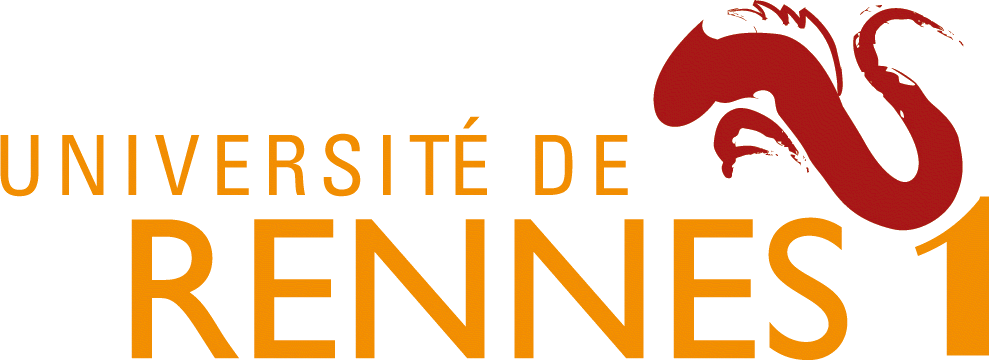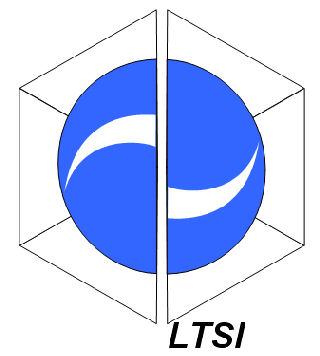News
Members
Publications
Software / Data
Job offers
Images / Videos
Collaborations
Conferences
Lab meetings: "Les partages de midi"
Practical information
Members Area
Next conferences we are in …


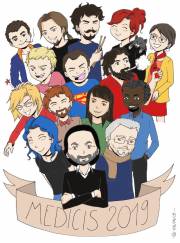
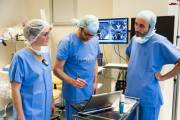
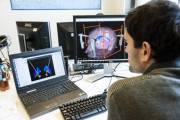
December, 13th 2016, Rennes, France
Amphithéâtre du Centre Cardio-Pneumologie, Centre Hospitalier Universitaire Pontchaillou




This year, in collaboration with the Labex CAMI, the GDR Robotique group will gather a community of researchers, clinicians and industrials around the topic of situation awareness in surgical robotics. The meeting aims at presenting researches and methods around the concept of modelling and monitoring computer assisted surgery, in order to share experience and expectations for future directions in robotic an context-aware developments. Different applicative contexts may benefit from these researches, including:
Chairs: Fabien Despinoy, Nabil Zemiti, Pierre Jannin
GDR representatives: Bernard Bayle, Guillaume Morel
No registration fees but inscription is mandatory.
If you are interested to participate to this event, please send an email to Noemie Buisard (noemie.buisard@univ-rennes1.fr) with your name, affiliations and participation (or not) to the lunch, no later than December, 2nd 2016.
Russell H. Taylor, Johns Hopkins University, USA http://www.cs.jhu.edu/
Tim Salcudean, University of British Columbia, Canada https://www.ece.ubc.ca/
Alexandre Thouroude, STAN Institute, France http://stan-institute.com/
Find below the final schedule of the workshop on Tuesday 13th.
09:30 - 10:00 | Welcome
Coffee and viennoiseries
10:00 - 10:45 | Hassan Alhajj, IT2IM team, LaTIM-Inserm U1101, University of Bretagne and Telecom Bretagne
Title: Video analysis for ophthalmic surgery
Resume: Data recorded and stored during video-monitored surgeries are a relevant source of information for surgeons, especially during their training period. But today, this data is virtually unexploited. Accordingly, different methods have emerged to help the surgeons in different manners: report generation, surgical skill evaluation, construction of educational videos and real-time video monitoring. We focus on the latter application, with the aim to automatically communicate useful information to the surgeon during the surgery. In particular, our goal is to set up a warning/recommendation generation system for videos recorded during cataract surgeries. To distinguish a normal conduct of surgery from an abnormal one, a crucial step is to recognize surgical tasks, phases or gestures in real-time. So, we worked first on recognizing them in the microscope videos. The results obtained are very encouraging but highlighted one main challenge: to improve the interpretation of the videos, one should be able to detect all surgical instruments. However, these instruments have a wide variety of shapes and are only partially visible in the surgical scene. To overcome this issue, we added a second video stream, filming the operating table. In this context, knowing which instruments exit or enter the operating table leads to which tools are likely being used by the surgeon and which tools surely are not. It’s an in progress work and we are currently trying to solve this task using deep learning techniques.
10:45 - 11:30 | Pierre Chatelain, Lagadic Team, IRISA, University of Rennes 1 and Technical University of Munich
Title: Quality-driven control of a robotized ultrasound probe
Resume: In the context of robot-assisted ultrasonography, we present a servoing approach to control the quality of ultrasound images. The ultrasound signal quality within the image is represented by a confidence map, which is used to design a servo control law for optimizing the placement of the ultrasound probe. A control fusion is also proposed to optimize the acoustic window for a specific anatomical target which is tracked in the ultrasound images. The method is illustrated in a teleoperation scenario, where the control is shared between the automatic controller and a human operator.
11:30 - 12:15 | Ninon Candalh-Touta, Agathe Team, ISIR, University of Pierre and Marie Curie
Title: How can we improve laparoscopic surgery training ?
Resume: Laparoscopic surgery becomes a standard for many surgical procedures as its great advantages over open surgery in terms of cosmetic results or patient recovery time. Unfortunatly, for the surgeon and consequently the student in medical school the surgery shows many problems. New skills are needed and students train outside of the operating room on simulators. Nevertheless, the training is difficult and painful and a new learning needs to be developed. The use of multi-sensory feedbacks or the development of an individualized training could lead to a more accurate, faster and less painful training.
12:15 - 14:00 | Lunch break
14:00 - 14:45 | Alexandre Thouroude, STAN Institute and Surgical Training School of Nancy, University of Lorraine
Title: Learning the optimal gesture, from a Mirage 2000 pilot to surgeon
Resume: Learning times must be shorter and shorter. Learning costs are more expensive. Robotic surgery is embedded in these immutable parameters. How could we translate the training of fighter pilots to surgeons? The main point is not necessary in the materials but how we use them.
14:45 - 15:30 | Russell H. Taylor, Department of Computer Science, The Johns Hopkins University
Title: Medical Robotics and Computer-Integrated Interventional Medicine
Resume: This talk will discuss ongoing research at the JHU Engineering Research Center for Computer-Integrated Surgical Systems and Technology (CISST ERC) to develop CIIS systems that combine innovative algorithms, robotic devices, imaging systems, sensors, and human-machine interfaces to work cooperatively with surgeons in the planning and execution of surgery and other interventional procedures. This talk will describe past and emerging research themes and illustrate them with examples drawn from our current research activities in medical robotics and computer-integrated interventional systems.
15:30 - 16:15 | Tim Salcudean, Electrical and Computer Engineering, The University of British Columbia
Title: Imaging and image guidance for prostate cancer interventions
Resume: We will describe our work in prostate imaging, which includes ultrasound and magnetic resonance elastography, and preliminary work in photoacoustic imaging. We have acquired ultrasound prostate images prior to radical prostatectomy and we correlated our images with histopathology results. We are currently using ultrasound imaging during robot-assisted radical prostatectomy, and we have put together a system to provide fused ultrasound and MRI guidance during surgery. We will describe our image acquisition and registration techniques, and our results of cancer imaging using elastography.
16:15 | Workshop closure

